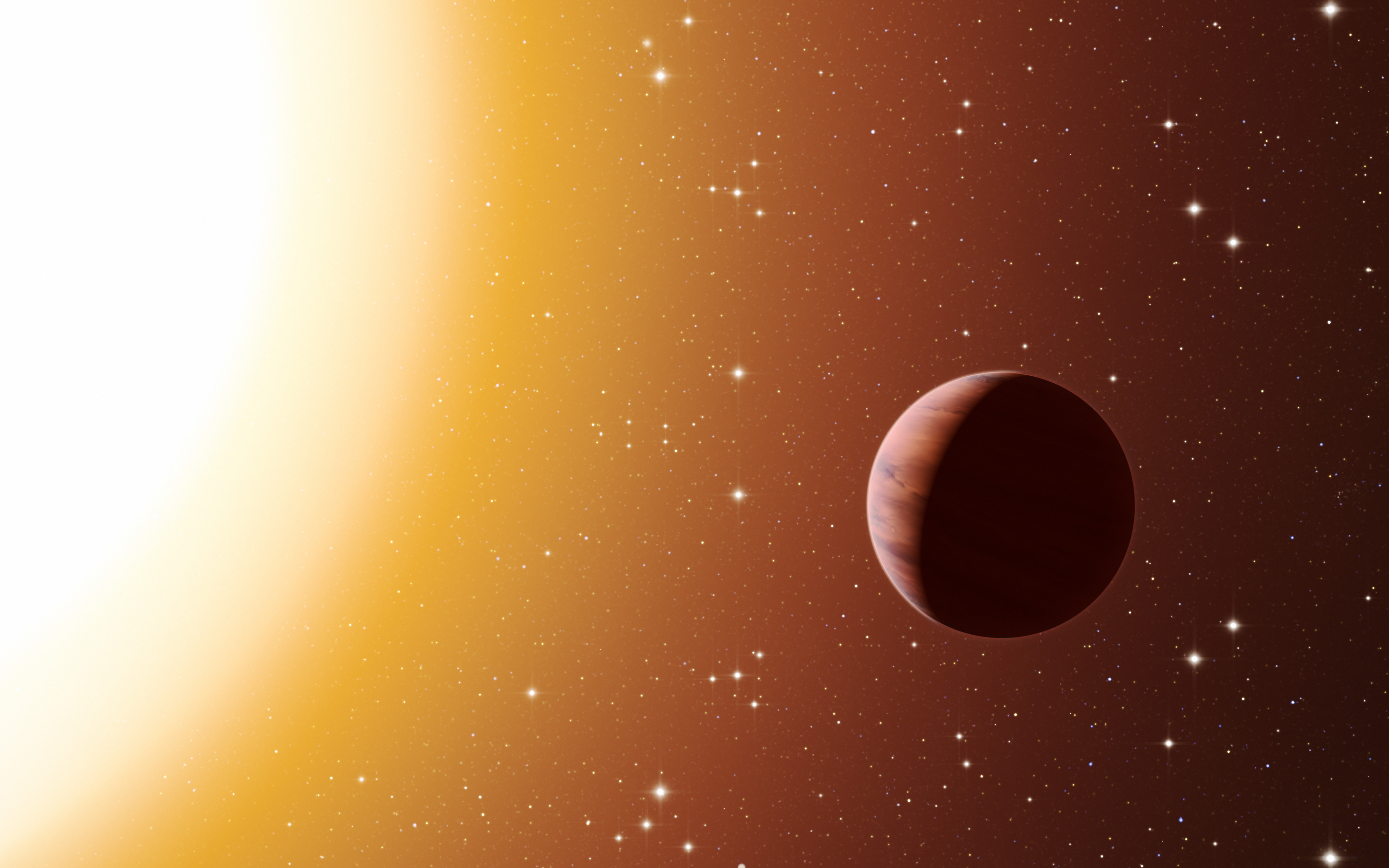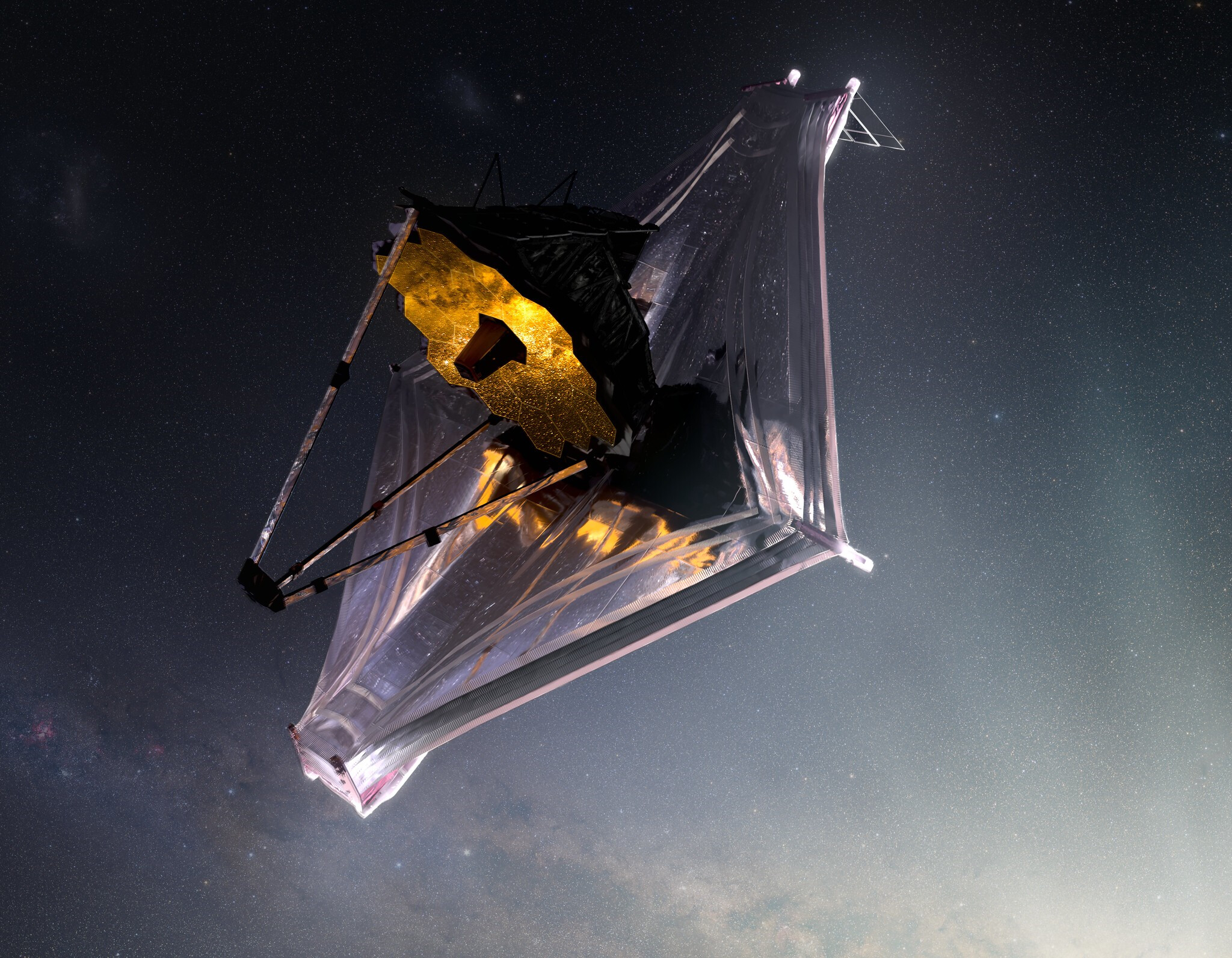Beyond the Dome - Exploring Science at the Institute
Is it really that simple? - Rethinking Exoplanet Atmospheres
Have you ever thought about how the atmospheres of exoplanets are structured? Are they comparable to Earth's atmosphere, or are these gaseous shells completely different?
PhD student Simon Schleich and his co-authors invite us to reconsider how we have been analyzing exoplanet atmospheres. In their recent paper ‘Knobs and dials of retrieving JWST transmission spectra: I. The importance of p–T profile complexity’, they argue advances in observational data quality let us question how the atmospheric models have been set up all these years.
First, what are exoplanets? They are planets orbiting stars outside our solar system. Just as the Sun hosts its own family of planets, so do many other stars in the universe. In fact, planetary systems are more common than we once thought! But finding exoplanets is not easy.
Unlike stars, planets reflect or emit very little light and their host stars can be millions of times brighter. Imagine trying to spot a little fly right next to a massive source of light—that’s the challenge astronomers face. Although the first exoplanet was only confirmed in the 1990s, scientists have since discovered thousands of them. They come in various flavours, in fact astronomers have categorized them into roughly 4: gas giants, Earth-like terrestrial planets, which we both find in our solar system and massive super-Earths, and Neptune-sized worlds, which are a bit more exotic, as we have no example for them in our neighbourhood.

Artist's impression of a Hot Jupiter (©ESO/L. Calçada)
Exoplanet Transit (©Malika Duffek)
How Do We Detect Exoplanets?
While we could try to directly image exoplanets, it is tough. Direct imaging is like peering at that elusive fly against a blinding light—possible but rare. Instead, we rely on indirect methods. The most successful? The transit method.
Picture a planet passing in front of its star from our viewpoint. This tiny transit momentarily dims the starlight, much like an insect fluttering across a huge lightsource. We as observers do not really notice the change, sensitive cameras certainly can. By carefully studying how the brightness dips, we can infer key characteristics of the planet: its size, orbit, and even its atmosphere.
Simon Schleich’s research focuses on those planetary atmospheres. For decades exoplanets have been detected using data from e.g. the Hubble Space Telescope. But now, with the powerful James Webb Space Telescope (JWST), we are stepping into a new era of discovery. JWST’s unparalleled precision opens doors to deeper insights—and bigger questions.
Think Again: Questioning What We Have Always Assumed
For years, scientists have mostly approximated exoplanet atmospheres as “isothermal,” meaning they assumed a constant temperature throughout. This worked reasonably well, especially for a class of planets called Hot Jupiters—gas giants that orbit close to their stars and are easier to observe due to their size and temperature.
Simon Schleich’s paper highlights a major flaw in this approach. He and his collaborators found that assuming an isothermal profile creates significant biases when analyzing atmospheric data with JWST’s high precision. Using a statistical model, they tested whether this simple assumption holds up… and it does not.
When they modeled atmospheres with just a single temperature point (isothermal), key parameters were inaccurately recovered. But when they used a more complex, multi-point profile—in this case, a four-point temperature profile—the results improved dramatically.
The Echo of Change: Why This Matters
If confirmed, this refinement would highlight the need to reassess how we structure models to study exoplanet atmospheres, given the influx of high-quality data and offering potential new insights into atmospheric compositions. Schleich’s findings remind us that science is an evolving process. With better data come better models—and sometimes, those models overturn long-standing assumptions.
Schleich’s follow-up paper will apply this refined model to real JWST data. The implications could extend beyond astrophysics, potentially influencing fields like astrobiology, and offering insights that may intersect with meteorology and climate science. After all, understanding planetary atmospheres is directly relevant to studying our own Earth’s climate - now more than ever before.
We have only just begun to scratch the surface of what JWST will teach us not only about distant worlds but also for drawing parallels to our own planet - the Earth.
Stay tuned—the universe is full of surprises!

James Webb Space Telescope (©NASA-GSFC, Adriana M. Gutierrez (CI Lab))
